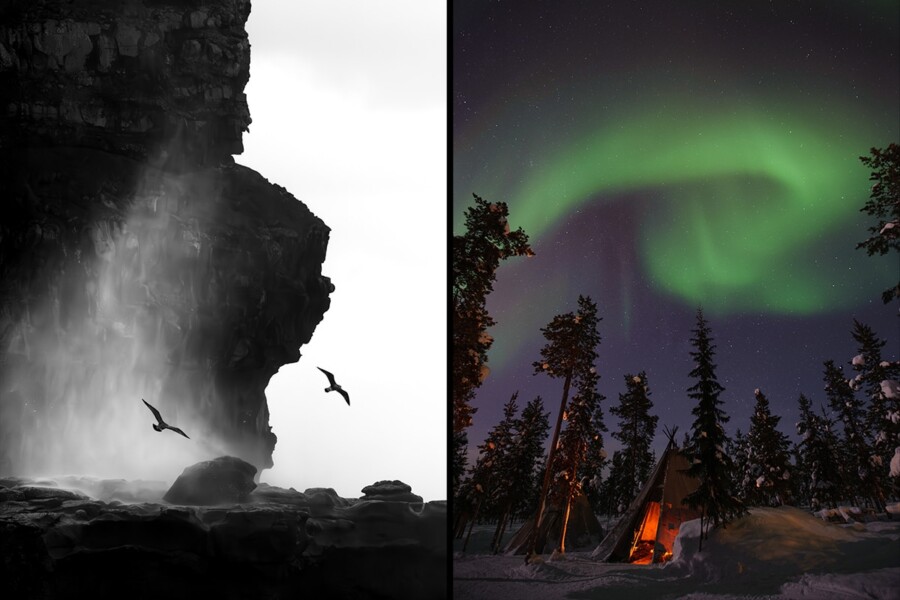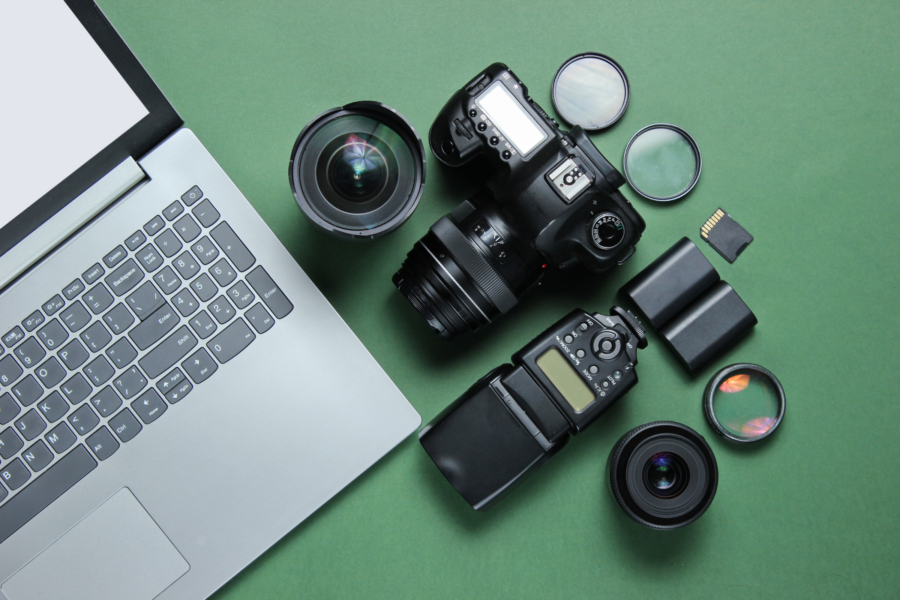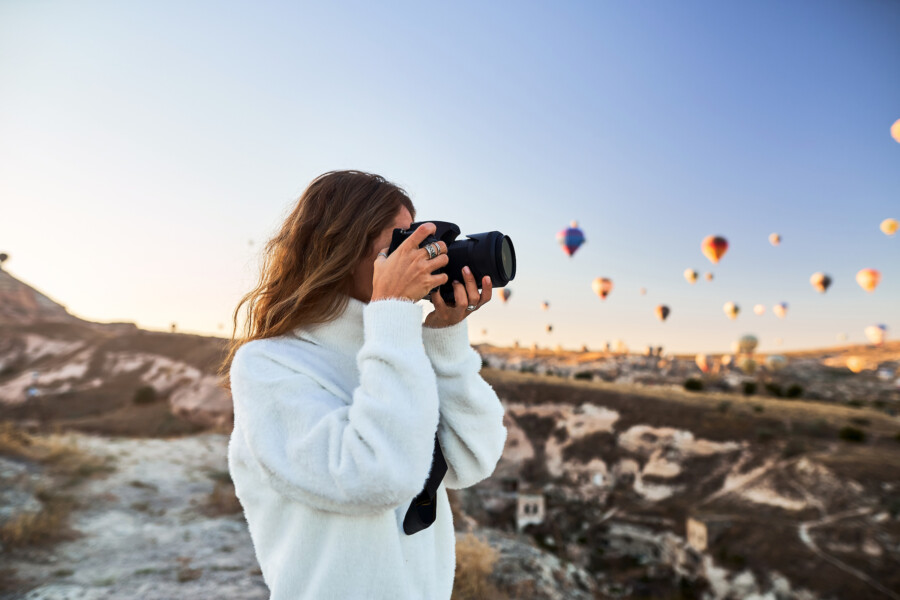Share
How to Photograph Baseball
By Brad Mangin When I was growing up in the San Francisco Bay Area my father always said, “You can’t beat fun at the ol’ ballpark.” He was ...
By Brad Mangin
When I was growing up in the San Francisco Bay Area my father always said, “You can’t beat fun at the ol’ ballpark.” He was right. I grew up a San Francisco Giants fan and I have capitalized my love for baseball into a career as a sports photographer, specializing in shooting the Grand Old Game.
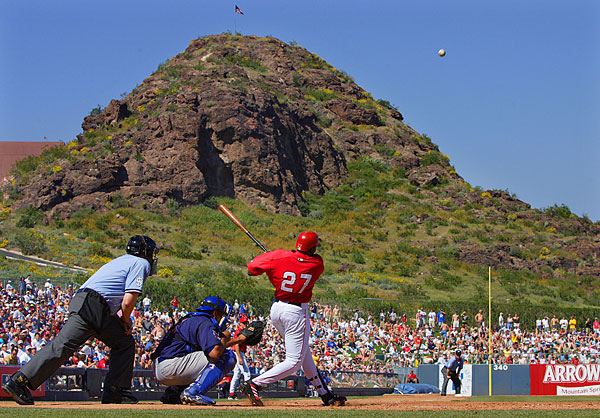
Photo by Brad Mangin
Baseball is one of the more difficult sports to photograph since there is not as much action like football or basketball or soccer. There are long periods of time where there is not great action to photograph- just pitchers throwing the ball and batters swinging the bat. However, every once in while something great happens that will make a great photograph: a great play on the base paths or an exciting catch in the outfield. This is when you need to be ready to capture a special photograph with your camera.
Photographing baseball requires knowledge of the game and its players, a great sense of timing, the proper equipment, and an eye for good light and clean backgrounds.
Baseball is a game that can be photographed at many levels, starting with small children playing t-ball all the way up to the Major Leagues. If you have never shot a baseball game before it is best to practice and learn shooting Little Leaguers (ages 8-12). At this age the game is played on a smaller field where the bases are only 60 feet apart (opposed to 90 feet apart from age 13 and up) and the pitchers mound is only 45 feet away from home plate (instead of 60 feet 6 inches from age 13 and up). This means you are able to make close up pictures of the players in action without needing a big and expensive 300mm or 400mm lens.
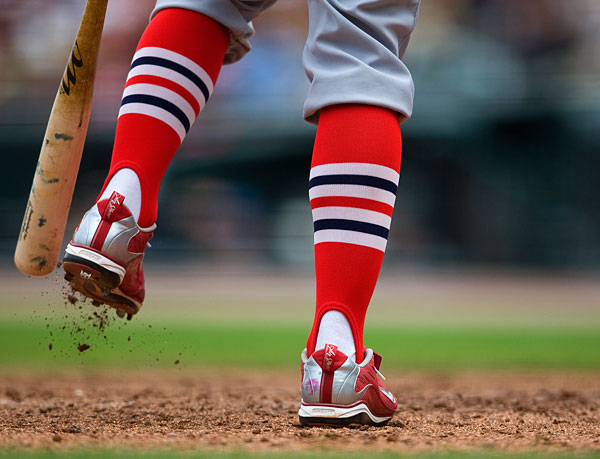
A digital SLR camera with a 70-200mm zoom lens will allow you to photograph Little Leaguers when you are starting out. You can shoot batters from first or third base. You can also shoot the pitchers from both sides, as well as from behind home plate while shooting through the backstop. If the backstop is made of chain link fence you can shoot the pitcher throwing right at you through the fence with your lens at 200mm and make a real nice picture.
Once you get the hang of the game and learn where you need to be to make successful pictures you might want to graduate to shooting older kids and young adults on the regulation fields (ages 13 and up, including high school and college). Before you head out to shoot at this level you need to upgrade your equipment and have a minimum of a 300mm 2.8 lens. This lens, combined with a 1.4x teleconverter is a good place to start. With this combination you will be able to bring the players in close enough to fill your frame and make good action pictures.
What’s in the Bag
3 Canon 1D Mark III bodies
1 Canon Mark IIn body
1 Canon 400mm f/2.8 IS USM
2 Canon 70- 200mm f/2.8 USM telephoto zoom
1 Canon 16-35mm f/2.8L II USM
1 Canon 24-70mm f/2.8
1 Canon EF 15mm f/2.8
1 Canon Speedlight 580EX II
1 Canon EF 1.4x II teleconverter
1 Gitzo GM2561T Traveler Carbon Fiber monopod
1 charger and batteries for Mark III cameras
3 PocketWizard MultiMaxes
1 Magic arm with super clamp
1 Think Tank Airport Security Carry-on Roller Bag
1 Think Tank Bum Bag
Before you shoot a game it is always a good idea to have a plan of attack. Are you covering one team or both? Are you shooting a particular player? Are you working on a story that you need to illustrate? It is always a good idea to get to the ballpark early, especially if you have never shot there before. Find out where you can shoot from, and if you can walk on the field from one side to another in between innings.

Photo by Brad Mangin
When I am shooting a day game, I always look at the light and the backgrounds to try and decide what vantage point would make the best pictures for me. If the game is in the summer and the sun is overhead creating harsh shadows I will try to shoot from the backlit side (usually third base) so I can expose for the faces. Faces are very important is sports photography, so it is very important to be able to see the intense expressions on the ballplayer’s faces.
I also look for clean backgrounds to position the action in front of. Having a good background makes your subject pop out more so the viewers are not distracted by clutter behind the ballplayers. Ballparks are full of bad backgrounds. You will find chain link fences with cars behind them, advertising signs and distracting empty seats just waiting to ruin your pictures. To combat this try to position yourself in a shooting position where the background will be a clean and simple fence, dark shadows or fans in a crowded grandstand. If you are still having a problem with your backgrounds it is a great idea to go up high in the stands and shoot down on the field. This is a great way to clean up your pictures, causing the grass or dirt to be your background.
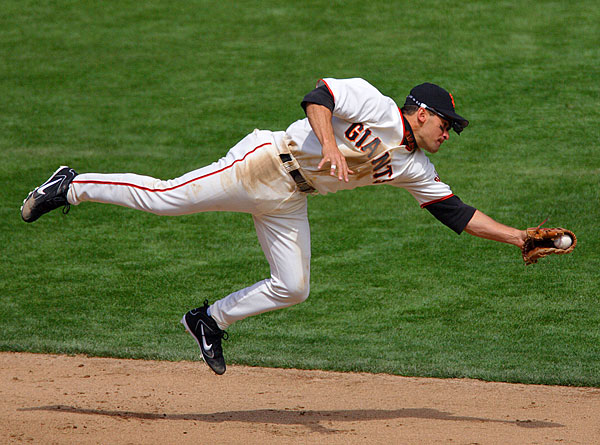
Moving to a higher vantage point can clean up backgrounds.
Photo by Brad Mangin
When you start shooting baseball you will come back with many pictures of the pitcher and the batters. That is fine in the beginning, but eventually you want to make action pictures of plays in the field. You need to learn how to make a picture if no one is on base by keeping your camera focused on an infielder hoping for a dive picture. There is no exact science for this, but the basic rule is that a majority of the time a batter will pull the ball. This means you should shoot a shortstop or third baseman if a right-handed hitter is up and the second baseman or first baseman if a left-handed hitter is up. If you concentrate hard and stay on a fielder you will eventually get a nice picture of an infielder making a dive for a ball.

Photo by Brad Mangin
Easier pictures occur on the bases when a runner slides into second base to steal or break up a double play. Some of the best pictures happen at home plate when a runner tries to score on a close play. You always need to be ready when runners are on base as they can score so many ways: base hit, wild pitch, sacrifice fly, infield grounder, etc.

Photo by Brad Mangin
Besides action there are many terrific opportunities to make feature pictures during the game. When players score a run and come back to the dugout they will celebrate with their teammates. When some batters strike out they will throw their bat, or better yet break their bat over their knee! Pictures like these help tell the story of the game. They can be much better than a picture of someone hitting a ball.
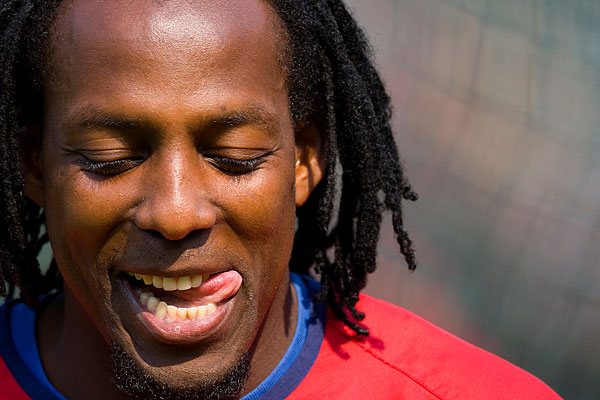
Photo by Brad Mangin
The final types of photograph to look for at a ballgame are candid portraits of the players. These can sometimes be obtained during the game, but are most often made before the game. I often get to the park three hours early to shoot batting practice. The players are very loose at this time and joke around with each other. The smiles they share with each other make for nice portraits. You can also catch them in the dugout sometimes before batting practice. I love shooting in the dugouts because the light is very even in the shade- like a wonderful outdoor studio.

Photo by Brad Mangin
If you can go to a baseball game and come back with some nice candid portraits, some good features and a few solid action pictures then you might be ready to try and get an assignment covering your local team. This is much easier to do at the high school, college or minor league level these days. Local newspapers will often hire freelancers to cover local teams and might give you a chance to shoot a high school game. Major League games are covered by very few large media outlets, including newspapers, wire services, league photographers, and team photographers. To get a paid assignment to photograph big league game you need to have a nice portfolio of pictures to prove to an editor that you can handle the assignment.
Once you land your first big paid assignment to shoot a game make sure you do a great job! To impress your editor make sure to tell the story of the game by having good pictures of the star of the day as well as the key plays. Move around to show different angles and shoot the features and portraits I talked about earlier. If you stay in one spot and come back with pictures of the pitcher and batters and nothing else your editor will not be pleased, and you probably will not get another assignment.
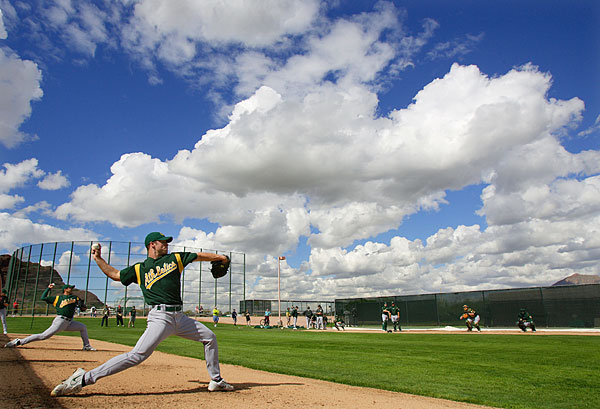
Photo by Brad Mangin
I photograph close to 100 Major League Baseball games a year, from the first pitch of spring training to the final out of the World Series. Some people might think that shooting that many games would not yield many different pictures, but they are wrong- and that is the beauty of baseball. Every time you go to the ballpark you see something different. You have the opportunity to shoot photographs from so many different positions you need to have fun and move around! Some days I shoot batters like crazy. Other days I will try to shoot real tight pictures of a batter dropping a bat in the batter’s box as he runs to first base to beat out an infield hit.
There are so many pictures to be made at a baseball game. If you have the right attitude and the right equipment you can get started right away. It takes time to learn the game and get comfortable with your equipment, but after awhile it will become second nature. I have been shooting the big leaguers since 1987 and I STILL learn something new every day I shoot.
Play ball!
Brad Mangin is a freelance sports photographer in the San Francisco Bay Area. He has covered all the major sports for outlets like Sports Illustrated and Major League Baseball, and has a massive collection of historical sports photos. His PhotoShelter archive contains thousands of high resolution sports images ready for editorial licensing from his site.
